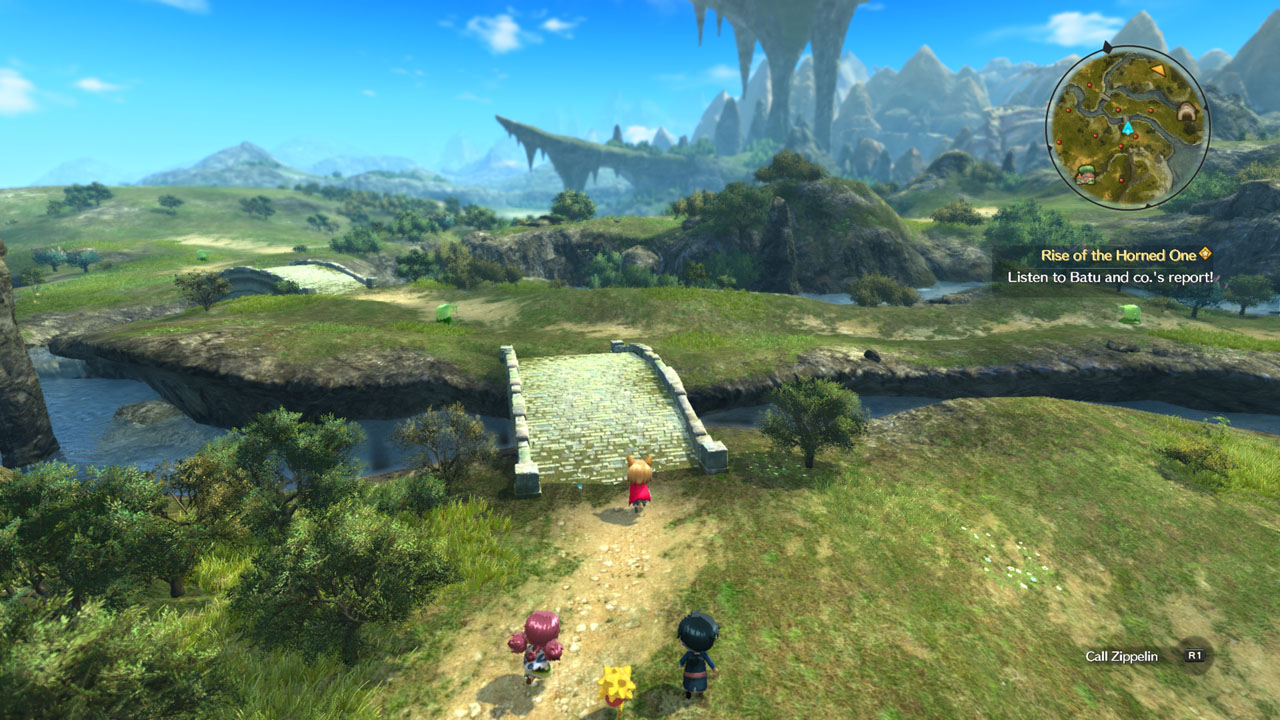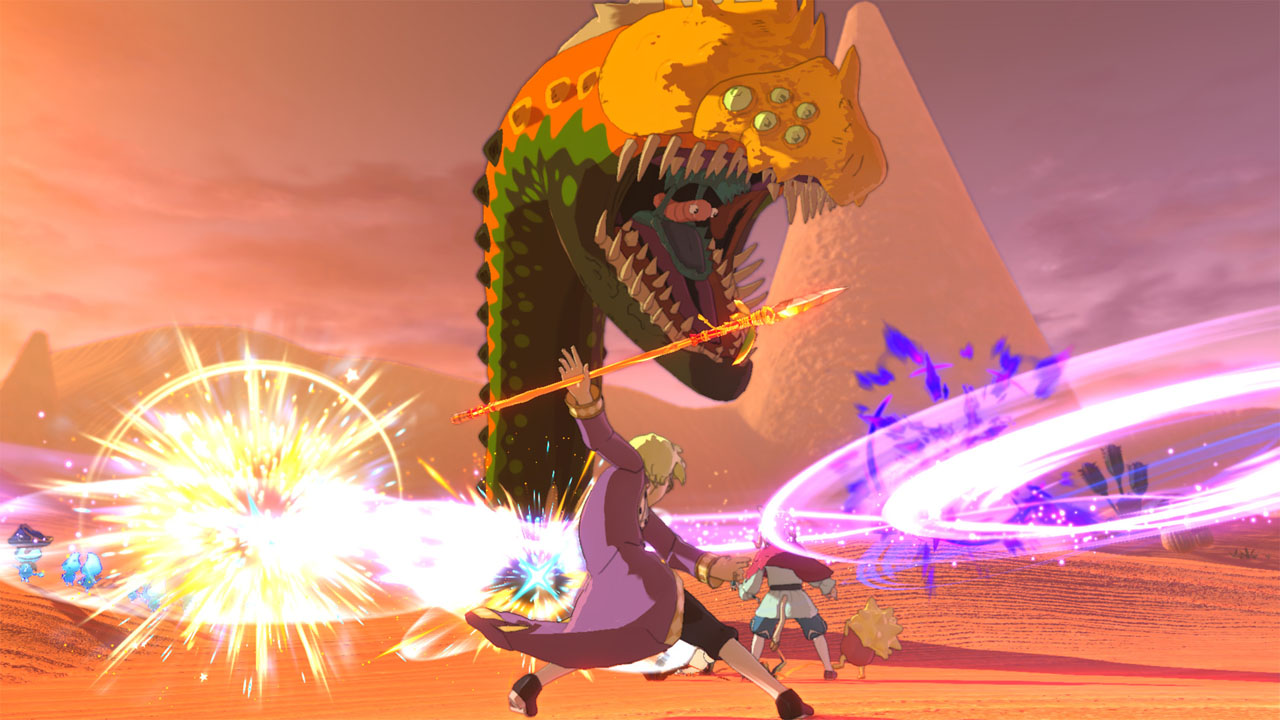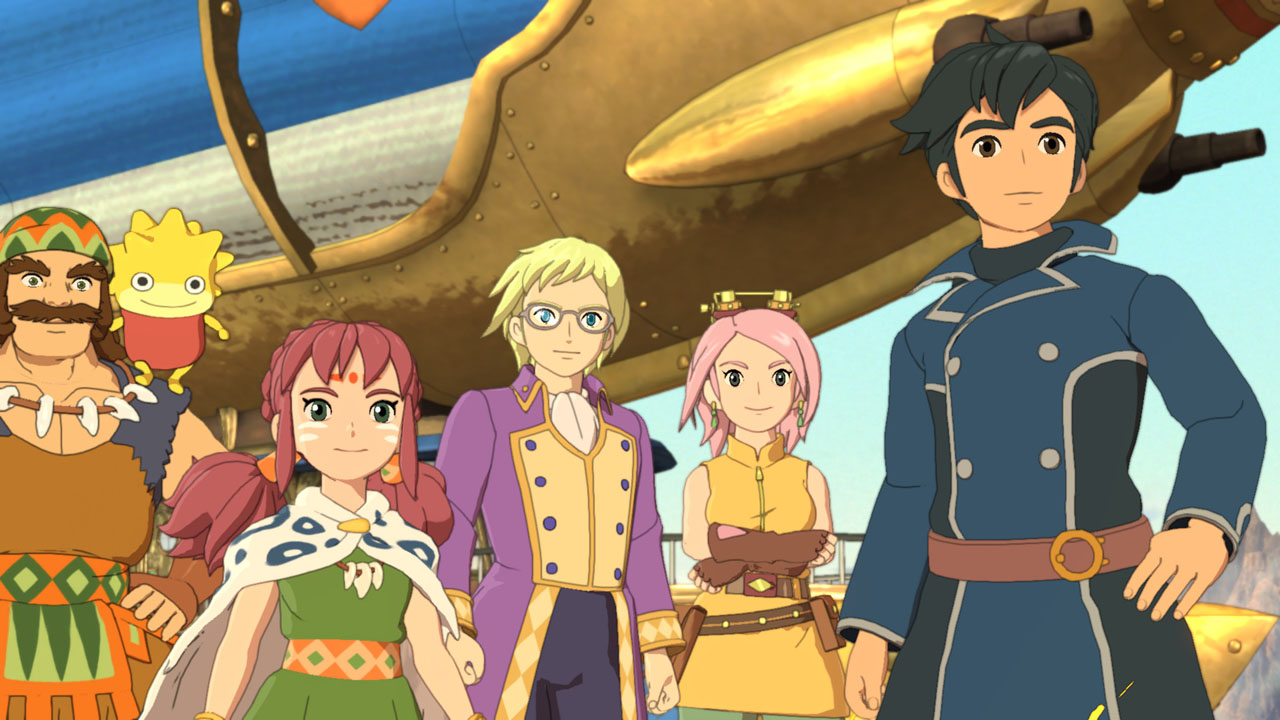Ni no Kuni II: Revenant Kingdom is a Japanese roleplaying title developed by Level-5 that leans heavily — and brilliantly — on an illustrative art style similar to Studio Ghibli’s various Japanese anime productions. The previous title, Ni no Kuni: Wrath of the White Witch, was in fact developed by both Studio Ghibli and Level-5, and while Revenant Kingdom doesn’t enjoy quite the same pedigree, its music was composed by Joe Hisaishi — the man behind countless groundbreaking Studio Ghibli movie soundtracks. Ni no Kuni II was destined to be beautiful and atmospheric from inception, and in that regard, it certainly doesn’t forsake its birthright.
(Mostly Good) Gameplay For Days

Enter the world of Evan, a young king-to-be whose father is killed in a coup and who is forced to leave his kingdom and journey to a new place in order to start and build a new one. Evan is aided primarily by Roland, a mysterious and presidential gentleman from another world that feels suspiciously like our own. Roland has been transported to Evan’s world in the midst of the coup (fortuitously losing a few of his many years in the process) and decides to stay to help him create a new kingdom where everyone can live in harmony, while bashing some monsters’ heads in on the way.
The most serious leap Ni no Kuni II takes is its firm departure from the turn-based gameplay of its predecessor. We saw a similar pivot made by the Final Fantasy series, another JRPG that recently evolved from a turn-based strategy title into an action-combat one. In this entry, battles are played with a third-person viewpoint and you get to choose which character you want to primarily play with. Two other characters fight alongside you, needing no direction but occasionally requiring assistance if the battle is unusually difficult.
Unleash melee attacks, spells, and utilize items and equipment to do the most harm to your enemies with the least to yourself and your allies. Gain Battle Points as your team levels up and cash them in on your Tactic Tweaker, where you adjust settings that allow you to reduce damage taken when blocking, enable damage boosts against slimy creatures, and so on. You also have the added advantage of friendly Higgledies, which are Kodama-like elemental spirits that aid you during combat in a variety of ways. Defeated enemies drop loads of loot, which is another tasty feature that helps to incentivize anyone fond of new and shiny things.
This battle system is strangely satisfying.

For players who may prefer the turn-based strategy and who miss getting plenty of time to think about their moves before they make them, you have the option to prepare yourself thoroughly before you get into a scrape, and even when you do start hacking and slashing, Ni no Kuni II is extremely forgiving. It’s easy to pick up how to manage your enemies and bosses often end up being killable in just one go. This isn’t a title that’s trying to flay its players alive with back-breaking duels to the death, and while Nioh players might yawn, it offers a passable enough challenge to keep story-driven players engaged.
But Wait — There’s More!
This isn’t the only battle system Ni no Kuni II utilizes. Enter Skirmishes, which are perhaps the greatest blot the title has to its name. It’s unclear why Level-5 didn’t focus more effort and time into refining its close-quarter battle system, and instead chose to create a whole new one to pair it with. Regardless, Skirmishes are strange beasts at best and require neither tactical nor muscle-memory skill to beat, and are weirdly obscure in their instructions. Fortunately, Skirmishes are mostly avoidable.
And more!
What isn’t avoidable is the “growing your kingdom” aspect of Ni no Kuni II, which isn’t a battle mechanic, but it certainly aids you as you encounter more and more difficult quests and enemies. Your kingdom serves as your epicenter of wealth and management as you build facilities that allow you to purchase quality-of-life goods and weaponry. Buildings range from a weapon workshop to a Higglery, where your Kodama-like battle pals are born and raised. These shops all need to be staffed, so you need to explore and complete side quests in order to bring in civilians to your kingdom to properly run them.
This is perhaps where Ni no Kuni II shines the most, at least where completionists are concerned. It’s wildly entertaining trying to track down people that would fit your facilities best, and upgrading those facilities means you have access to better equipment and perks that help you in battle. Ni no Kuni II forces you to really dedicate yourself to side quests you come across in order to do so. These side quests might seem like a piece of cake on the surface, but they are often surprisingly detailed and difficult. Given that these quests take place in the absolutely gorgeous Ni no Kuni II world, means that most players won’t mind taking a long detour in the opposite direction of the main quest line in order to unlock something useful.
Undeniably Enchanting, Despite The Cheese Factor

Naïve and madly optimistic characters driving whole plotlines are not always the best foundations for stories, but in Ni no Kuni II’s case, Evan’s desire to build a kingdom of peace and prosperity is somehow genuinely endearing. It’s a cheesy way to craft a story, and on the surface it may even seem lazy — but once you’re actually in Evan’s world and encountering his friends and foes alike, it becomes apparent that there’s a definitive undercurrent of organic warmth to the tale.
Similarly, deep character development is missing, but it’s offset by the numerous and remarkable characters full of personality and spice that populate the world. This is not to mention the pure bliss of simply seeing a new main character or boss for the first time. Character and landscape designs are constantly on point and often are simply breathtaking. You don’t have to be a fan of Japanese anime or Studio Ghibli to be able to appreciate what was surely the painstaking process of putting many of these cities and battle arenas together.
AN APT SOUNDTRACK
Accompanying Ni no Kuni II’s masterful visuals is Joe Hisaishi’s equally masterful soundtrack. The music helps to create and propagate atmospheres in different regions and towns, and even the music that plays when you open the starting screen is perfectly suited to encouraging you to triumphantly forge onwards.
Ni no Kuni II does, at times, tempt the impatience of a more experienced gamer.
You don’t really get to sink your teeth into the title until Chapter 4, and even afterwards you may find small issues troubling. Take, for instance, the lack of consistency with being able to jump off of surfaces. Ni no Kuni II will only let you jump off of certain things at certain heights, which sometimes feels very capricious and therefore oftentimes frustrating. There’s no fall damage, but it may have been wiser to simply let a player fall to their death if necessary for the consistency of game physics.
This is, though, yet another example of Ni no Kuni II being angelically forgiving. And why not? Ni no Kuni II is astounding, really, for its art and sound design. It’s astounding for its warm characters and light sense of humor. It’s astounding for its scale; for its scope. It’s not astounding for its wickedly masochistic gameplay. And, frankly? It doesn’t have to be to be great.
The Verdict: Excellent
Brimming with warmth and charming to the core, Ni no Kuni II: Revenant Kingdom is a visually and musically stunning Studio Ghibli-esque JRPG title. Challenging itself with a basketful of new gameplay mechanics, this second entry is a definitive departure from the first. In most regards it succeeds magnificently, while in others it sadly stumbles.

